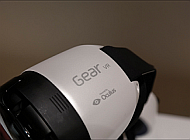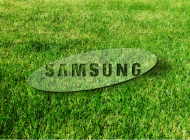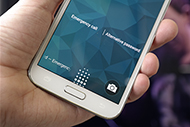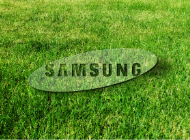
Samsung initially started showing interest in the health and fitness category with its 2013 flagship device, the Galaxy S4. The GS4 was the first device to feature Samsung’s S Health application. Unfortunately, Samsung had packed so many confusing and impractical features in it that it became bloated and many consumers ended up not using the service at all. However, with the Galaxy Note 3, the Korean giant took consumers’ advice and finally cut down on all of the useless features.
With the launch of the Galaxy S5, one of Samsung’s key features was health and fitness. However, all recent smartphones had the same sensors and were able to track the same data, so the Korean giant went ahead and equipped the Galaxy S5 with a heart-rate sensor – an industry first. Now it’s doing the same thing again, this time with an ultraviolet (UV) sensor in its upcoming flagship device.
The Galaxy Note 4 will be the world’s first smartphone to sport an ultraviolet (UV) sensor, and its functionality will be incorporated within Samsung’s S Health app. The sensor will be used to measure the sun’s ultraviolet (UV) radiation and prevent users from damaging their skin, ageing it prematurely, and increasing their risk of skin cancer by giving recommended guidance based on the current UV index level at that particular place and time. To actually measure the UV radiation, users will need to maintain over 60 degree angle of elevation towards the sun against the back of the sensor.
There are a total of 5 UV index levels: Low, Moderate, High, Very High and Extreme, and users will be presented with different precautions based on the level of the sun’s ultraviolet radiation.
UV Index 0-2 (Low): UV Index reading of 0 to 2 means low danger from the sun's UV rays for the average person.
• Wear sunglasses on bright days.
• If you burn easily, cover up and use broad spectrum SPF 30+ sunscreen.
• Watch out for bright surfaces, like sand, water and snow, which reflect UV and increase exposure.
UV Index 3-5 (Moderate): A UV Index reading of 3 to 5 means moderate risk of harm from unprotected sun exposure.
• Stay in shade near midday when the sun is strongest.
• If outdoors, wear protective clothing, a wide-brimmed hat, and UV-blocking sunglasses.
• Generously apply broad spectrum SPF 30+ sunscreen every 2 hours, even on cloudy days, and after swimming or sweating.
• Watch out for bright surfaces, like sand, water and snow, which reflect UV and increase exposure.
UV Index 6-7 (High): A UV Index reading of 6 to 7 means high risk of harm from unprotected sun exposure. Protection against skin and eye damage is needed.
• Reduce time in the sun between 10 a.m. and 4 p.m.
• If outdoors, seek shade and wear protective clothing, a wide-brimmed hat, and UV-blocking sunglasses.
• Generously apply broad spectrum SPF 30+ sunscreen every 2 hours, even on cloudy days, and after swimming or sweating.
• Watch out for bright surfaces, like sand, water and snow, which reflect UV and increase exposure.
UV Index 8-10 (Very High): A UV Index reading of 8 to 10 means very high risk of harm from unprotected sum exposure. Take extra precautions because unprotected skin and eyes will be damaged and can burn quickly.
• Minimize sun exposure between 10 a.m. and 4 p.m.
• If outdoors, seek shade and wear protective clothing, a wide-brimmed hat, and UV-blocking sunglasses.
• Generously apply broad spectrum SPF 30+ sunscreen every 2 hours, even on cloudy days, and after swimming or sweating.
• Watch out for bright surfaces, like sand, water and snow, which reflect UV and increase exposure.
UV Index 11+ (Extreme): A UV Index reading of 11 or more means extreme risk of harm from unprotected sun exposure. Take all precautions because unprotected skin and eyes can burn in minutes.
• Try to avoid sun exposure between 10 a.m. and 4 p.m.
• If outdoors, seek shade and wear protective clothing, a wide-brimmed hat, and UV-blocking sunglasses.
• Generously apply broad spectrum SPF 30+ sunscreen every 2 hours, even on cloudy days, and after swimming or sweating.
• Watch out for bright surfaces, like sand, water and snow, which reflect UV and increase exposure.
Just to create awareness and enhance users’ knowledge, Samsung will include a few true and false sun protection statements in the app, as well.
True
- • A tan results from your body defending itself against further damage from UV radiation.
- • A dark tan on white skin offers only limited protection equivalent to an SPF of about 4.
- • Up to 80% of solar UV radiation can penetrate light cloud cover. Haze in the atmosphere can even increase UV radiation exposure.
- • Water offers only minimal protection from UV radiation, and reflection from water can enhance your UV radiation exposure.
- • UV radiation is generally lower during the winter months, but snow reflection can double your overall exposure, especially at high altitude. Pay particular attention in early spring when temperatures are low but sun’s rays are unexpectedly strong.
- • Sunscreens should not be used to increase sun exposure time but to increase protection during unavoidable exposure. The protection they afford depends critically on their correct application.
- • UV radiation exposure is cumulative during the day.
- • Sunburn is caused by UV radiation which cannot be felt. The heating effect is caused by the sun’s infrared radiation and not by UV radiation
False
- • A suntan is healthy.
- • A tan protects you from the sun.
- • You can't get sunburnt on a cloudy day.
- • You can't get sunburnt while in the water.
- • UV radiation during the winter is not dangerous.
- • Sunscreens protect me so I can sunbathe much longer.
- • If you take regular breaks during sunbathing you won't get sunburnt.
- • If you don't fell the hot rays of the sun you won't get sunburnt.
We have to admit, this is the first time we feel Samsung has added something really useful to its collection of health and fitness features, because these days people are not taking enough precautions to protect themselves, mainly due to lack of enough knowledge, from the sun’s UV radiations, and cases of skin cancer are increasing rapidly. Alongside the UV sensor, Galaxy S5’s complete array of health and fitness features, including the heart-rate sensor, will be present on the Galaxy Note 4, as well.
















